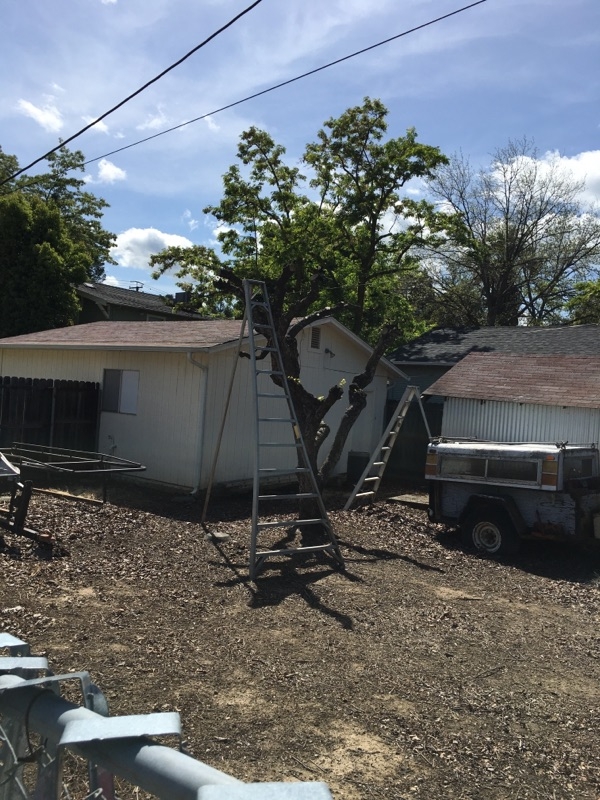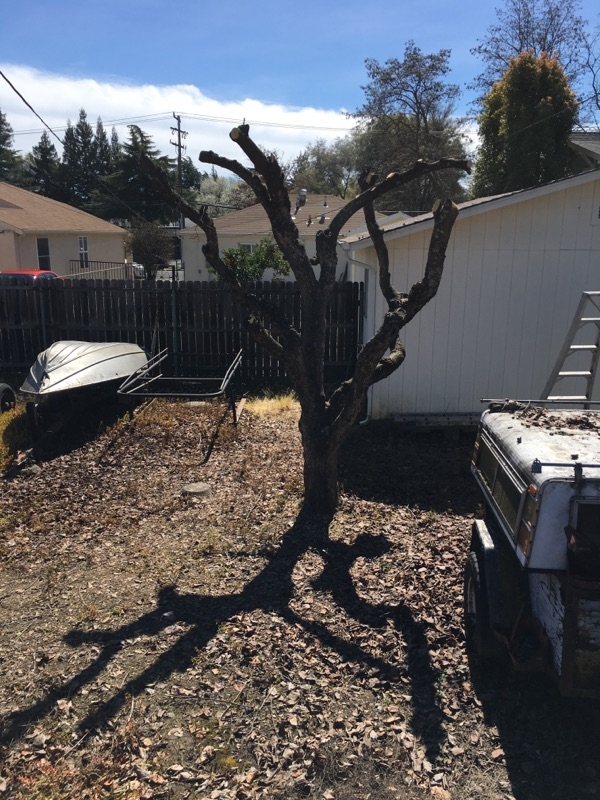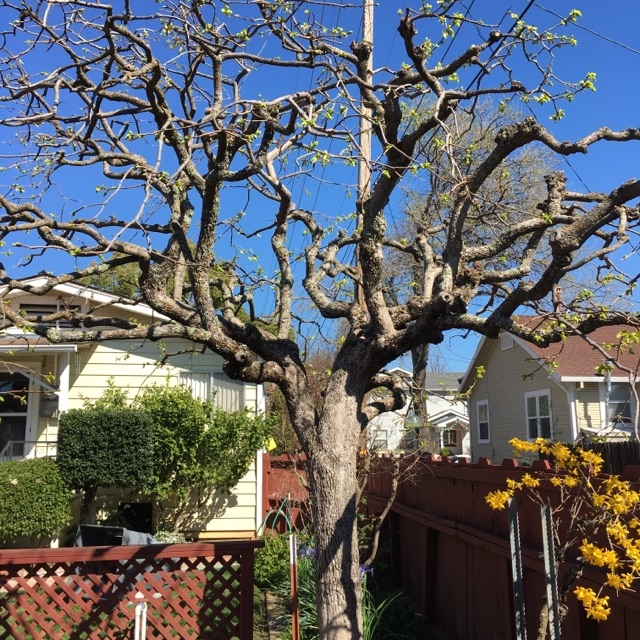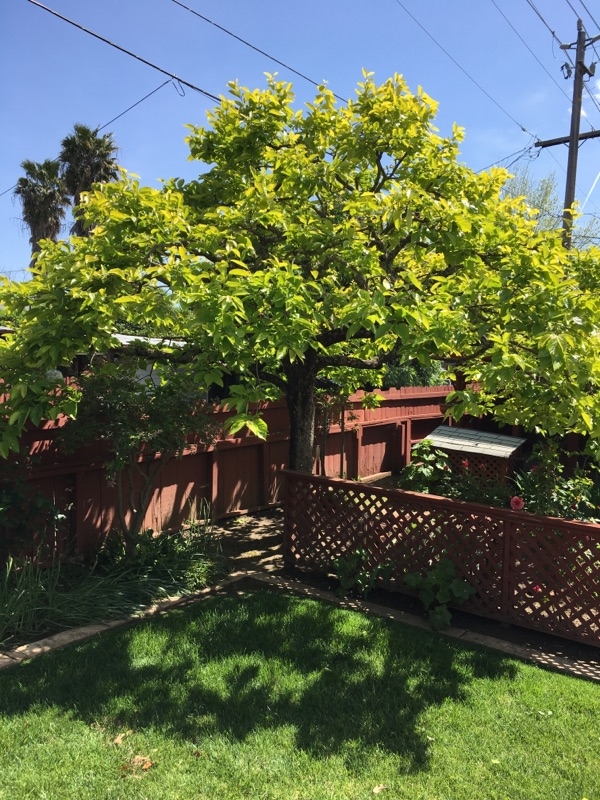Pruning
Pruning home deciduous fruit trees is not a difficult task, although one that requires knowledge, skill and patience. Pruning methods change as the tree grows from a newly planted young tree to pruning a fruit-bearing tree.
To plant and prune a new deciduous fruit tree place the tree on a slight mound for correct drainage. The bud union should be at least 3-4 inches above the soil height. The uppermost large roots should be below the surface of the soil. Cut the trunk at 18 to 24 inches from the soil. I recall hearing this information to cut the tree ‘knee high' during the Master Gardener training class, and hearing the audible gasp from the trainees.
If the branches below the cut are not developed well, cut them off at the truck. In warm climates, paint the trunk with a mix of 50% white latex paint to 50% water. Using a sponge brush paint from 2 inches below the soil to the top of the tree.
Major annual pruning is necessary for most deciduous fruit trees to produce regular crops of acceptable sized fruit. Mid spring through summer fruit trees can be pruned for shape and height. Backyard growers are often reluctant to do major pruning on a tree in fear of hurting or killing it. This fear is unwarranted as proper pruning invigorates the trees and will extend their years of bearing fruit.
The ideal time to prune is when the tree is dormant. During the first 5 years of the trees life, it should be pruned for structural strength and correct height for thinning and harvesting fruit. As the tree matures (over 5 years), it is pruned to maintain and renew fruiting wood and to distribute fruitwood properly throughout the tree. It will also reduce its crop so the fruit will size better and limbs will not break from the weight of the fruit. During this time, any dead, damaged or diseased branches should be removed, along with water sprouts and suckers.
Pruning correctly is the most important practice used to train young trees. Pruning mature trees helps reduce tree height, create sunlight penetration into the canopy and reduce the amount of fruit thinning the tree will require.
Tools needed to accomplish pruning chores are an orchard ladder, good pruning shears and a sharp pruning saw. There are other tools available to help with this job including a pole pruner or ratchet type pruners.
The photos below are of two mature persimmon trees in our neighborhood. One pruned correctly and one chain saw pruned. Which one would you want to have in your yard? The photos were taken the same day, one month apart.





